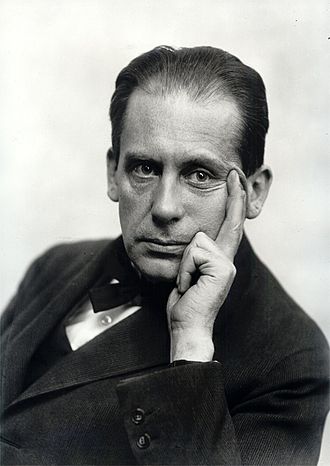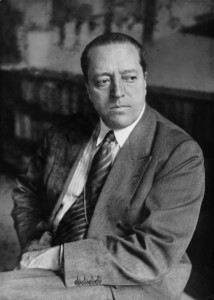In the early twentieth century, designers were forced to explore new design practices due to material shortages caused by WW2. This led designers to prioritize the function of buildings, eliminating ornamentation. Many asked the same question: “Can improvement be brought to this medium that takes it to a level beyond expectation?”
The world of architecture had remained steady for many years, often due to scarce resources and the need for form follows function in structural design and implementation. However, some refused to let their dreams remain limited to their imagination. By pushing the boundaries of materials, new technologies and art combined with globalization grew the new “modernist” world.
Of the early pioneers of modernist design, several names are as recognized as Walter Gropius, Mies van der Rohe, and Le Corbusier. These fathers of Modern Architecture blazed the path in creating many of the modernist themes that would quickly become synonymous with modernist architecture, and their fearless devotion to pushing boundaries still inspire designers today. This article will look at each man, shining a light on the unique contributions that each brought to this architecture movement’s birth.
Walter Gropius
The first and often most well-known was Walter Gropius, who made his mark on the world of architecture by creating an incredible home in Boston, Massachusetts, that featured glass, acoustic plaster, and chrome accents. This design style stood in stark contrast to the Colonial homes across the American landscape.
Born in Germany, Gropius grew up in a family of architects and joined Peter Behrens’ architectural firm in 1908. It was here that Gropius met and worked with fellow pioneer Ludwig Mies Van der Rohe.
The first design that Gropius offered the world was known as the Fagus-werk. The design of this factory that produced parts for creating boots not only impressed owner Carl Benscheidt but laid the foundation for a career that would see Gropius bring his impressive designs to nearly every style of residential and commercial property.
Just over a decade later, Gropius became the headmaster of Grand-Ducal Saxon School of Arts and Crafts in Weimar. Gropius soon turned the school into the famous Bauhaus, a place where aspiring artists, architects, and designers, could come to study and bring their own inspiration to life. Germany’s Third Reich regime’s continued threat led Gropius to move the Bauhaus to Dessau in 1930, and ultimately leave Germany altogether for Boston in 1936.
He built his family home, the Gropius House with typical New England materials like wood and brick but introduced Modernist features like long windows on the first floor and industrial materials like steel and glass. The home included custom furniture to maintain the Bauhaus philosophy of total art.
Gropius was later part of the design of Harvard University’s Graduate Center which was the first Modernist Building design for any major American University and seen as a turning point in the acceptance of Modern Architecture in the US. Here he combined modern elements of steel and glass with bricks of limestone to create courtyards and covered walkways, defining the spaces and enhancing the relationship between the building and environment.

Ludwig Mies van der Rohe
For Ludwig Mies van der Rohe was known as a savant of modernist architecture due to the fact that he lacked any type of formal training. Yet, his incredible designs left no room for concern. Mies van der Rohe quickly rose the ranks of German architecture with his design of the famous Barcelona Pavilion of the World Exhibition in Barcelona. While still in his twenties, Mies van der Rohe also designed and brought to life homes such as Villa Tugendhat, in Brno, Czech Republic.
Mies van der Rohe’s architecture philosophy was built on a ‘less is more’ concept. This can be seen across his designs, with clean lines and wide-open spaces present in nearly every design. For Mies van der Rohe, the basic structures that built any building could offer the same beauty and inspiration as the outside elements.
A lasting legacy of Ludwig Mies van der Rohe is the campus of the Illinois Institute of Technology. A campus of gleaming glass, steel buildings, and brick gives an insight into the inspiration that drove one of modernist architecture’s earliest leaders.

Le Corbusier
Le Corbusier, who took inspiration for his buildings and urban designs from modern engineering developments such as passenger jets, cruise liners, automobiles, grain silos, and so on. In his most famous book, ‘Towards a New Architecture’, he argued that ‘a house is a machine for living in’.
The final member of the early modernist trio was Charles-Edouard Jeanneret, known in architecture design as Le Corbusier. A Swiss-French author and architect, Le Corbusier built his very first home in 1907 at the early age of 20.
Travel across Europe took Le Corbusier to the spheres of various apprenticeships – culminating in time at Peter Behrens’ architectural firm. It is here that Le Corbusier may have brushed shoulders with Gropius and Mies van der Rohe.
Le Corbusier’s work shows influence from the world of geometrical forms and spatial elements, as well as an emphasis on concrete construction and landscaping.
Found within his famous work Vers une architecture (Toward an Architecture), Le Corbusier defined five specific elements of a modernist structure:
-
Elevated structure supported by columns made of concrete
-
The presence of an open floor plan
-
Various non-support walls (free facade) to allow open choices for wall placements
-
Ribbon windows that allow natural light to fill rooms
-
Roofed terraces and gardens for practical use
Not only did Le Corbusier leave an impact on the world of architecture, but he also brought his inspiration into the furniture industry. He created a line of furniture under the name “LC Collection” that utilized elements such as leather, fabric shapes, and chrome tubing to create modernist furniture that mirrored the human form.
Modernist Inspiration In Modern Times
The impact of these three pioneers of modernist architecture can still be seen and enjoyed around the world today. Any tour of famous architecture is sure to come upon a modernist design that bears the trademark look and feel of a Gropius, Mies van der Rohe, or Le Corbusier. A large amount of high end furniture mimics the designs of Le Corbu and Bauhaus as well. With a bit of knowledge about each man under your belt, you can begin to appreciate their gifts to the architectural world and implement them in new ways.


